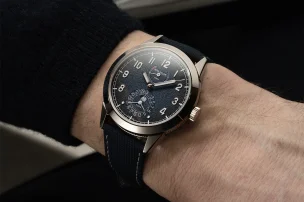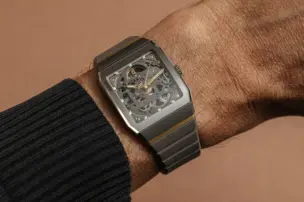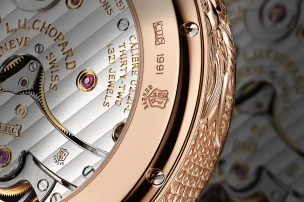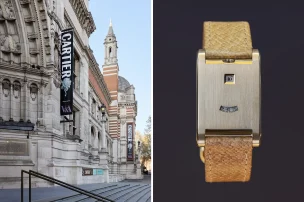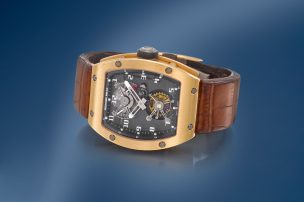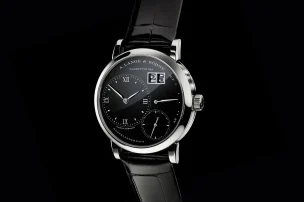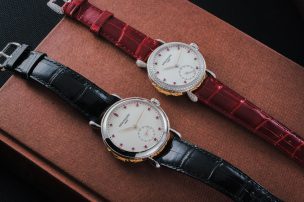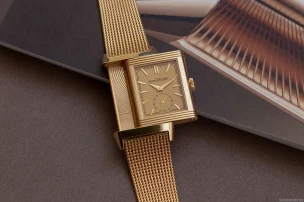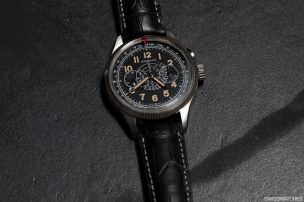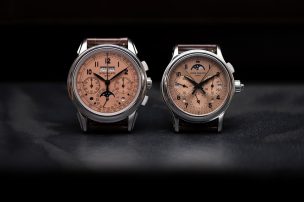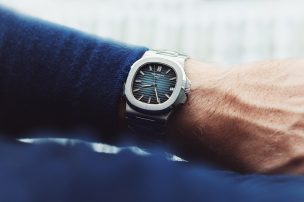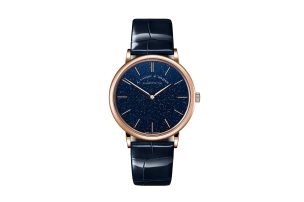
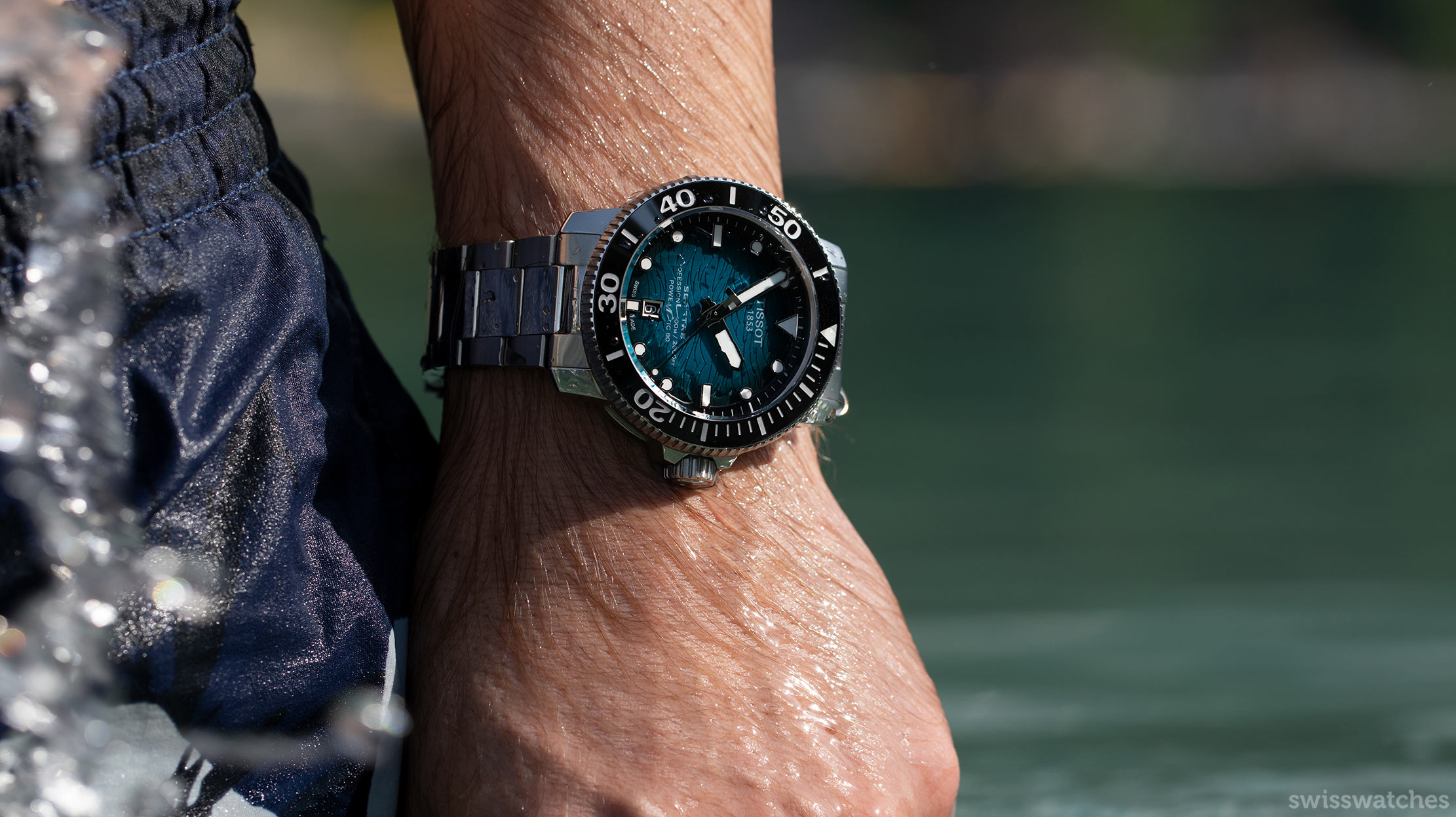
In The Metal: Why The Tissot Seastar 2000 Professional Is A Must For Every Diver’s Watch Fan
This story begins with a personal anecdote, which at first doesn’t appear to have anything to do with Tissot’s new Seastar 2000 Professional Powermatic 80. My Seastar from the 1960s is a vintage dress watch. It is so simple and so elegant that actually, I only wear it for important occasions.
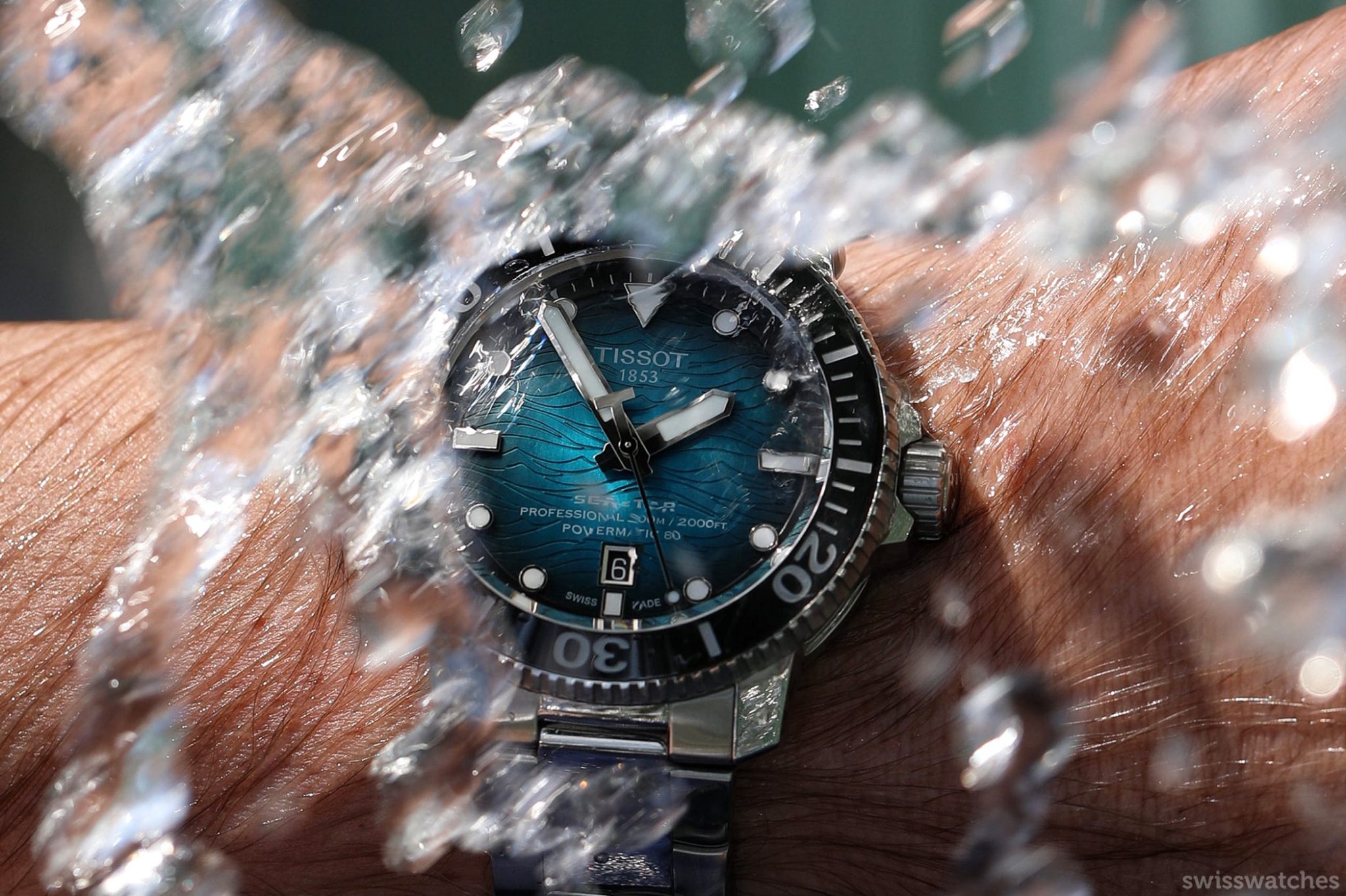
It has a slim 35 mm yellow-gold case, three hands, pointed indices, as well as a thick domed sapphire crystal, which extends right over the rim. The fact that the dial bears the word “Seastar” irritates some of my friends with an interest in watches. But actually, Tissot didn’t always house its water-resistant models in chunky cases with thick bezels. Rather, the watches were initially far more suited to evening wear than a diving suit.
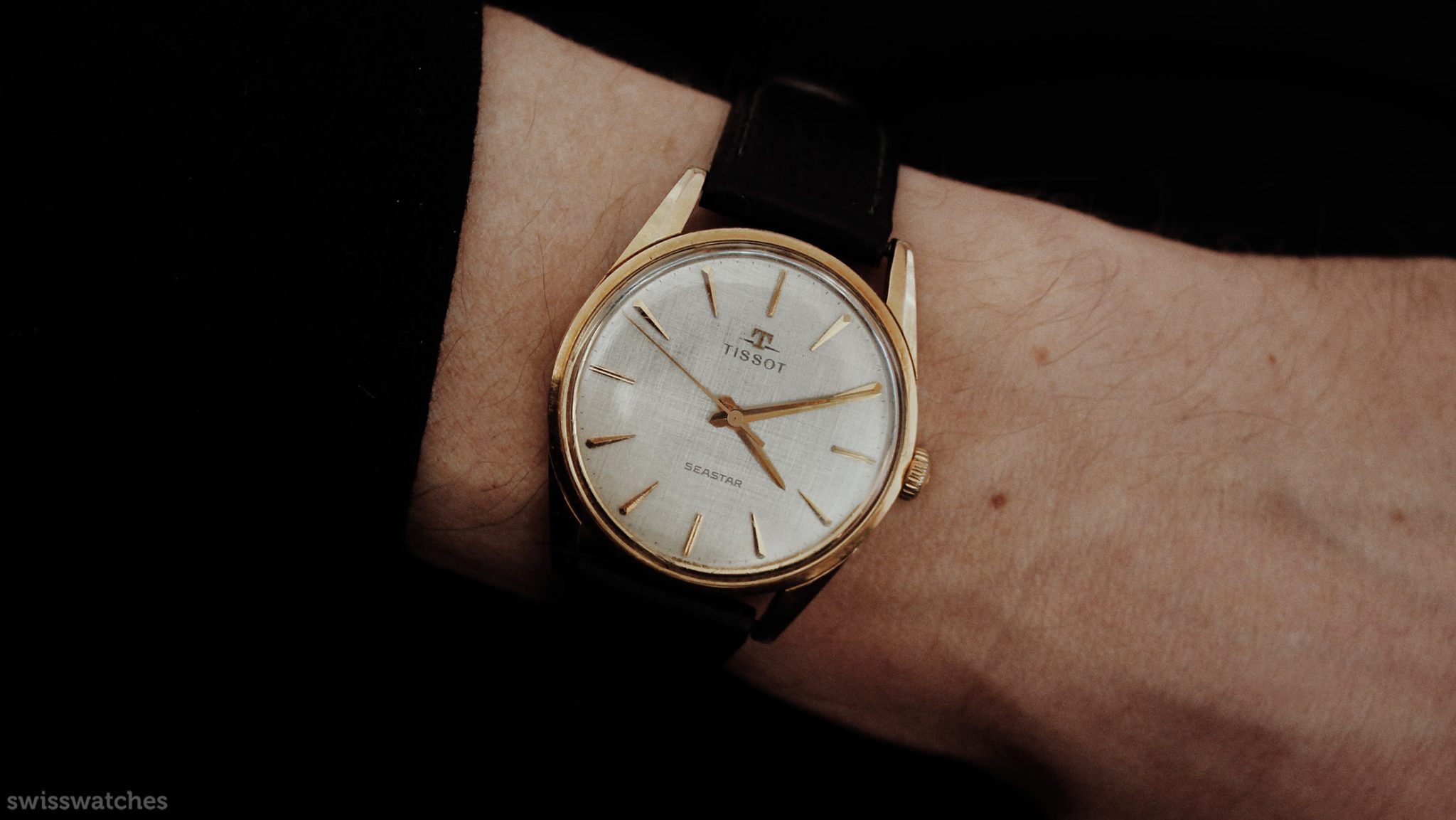
Tissot’s water-resistant and anti-magnetic watches
When it comes to diver’s watches and the race to create water-resistant pieces, one first thinks of the likes of Rolex, TUDOR, and Panerai. By the 1930s, Rolex had created its Oyster case – and thus its first water-resistant watch. However, at the horology house Tissot from Le Locle, founded in 1853, the brand was already experimenting with water-resistant watches in the very same decade.
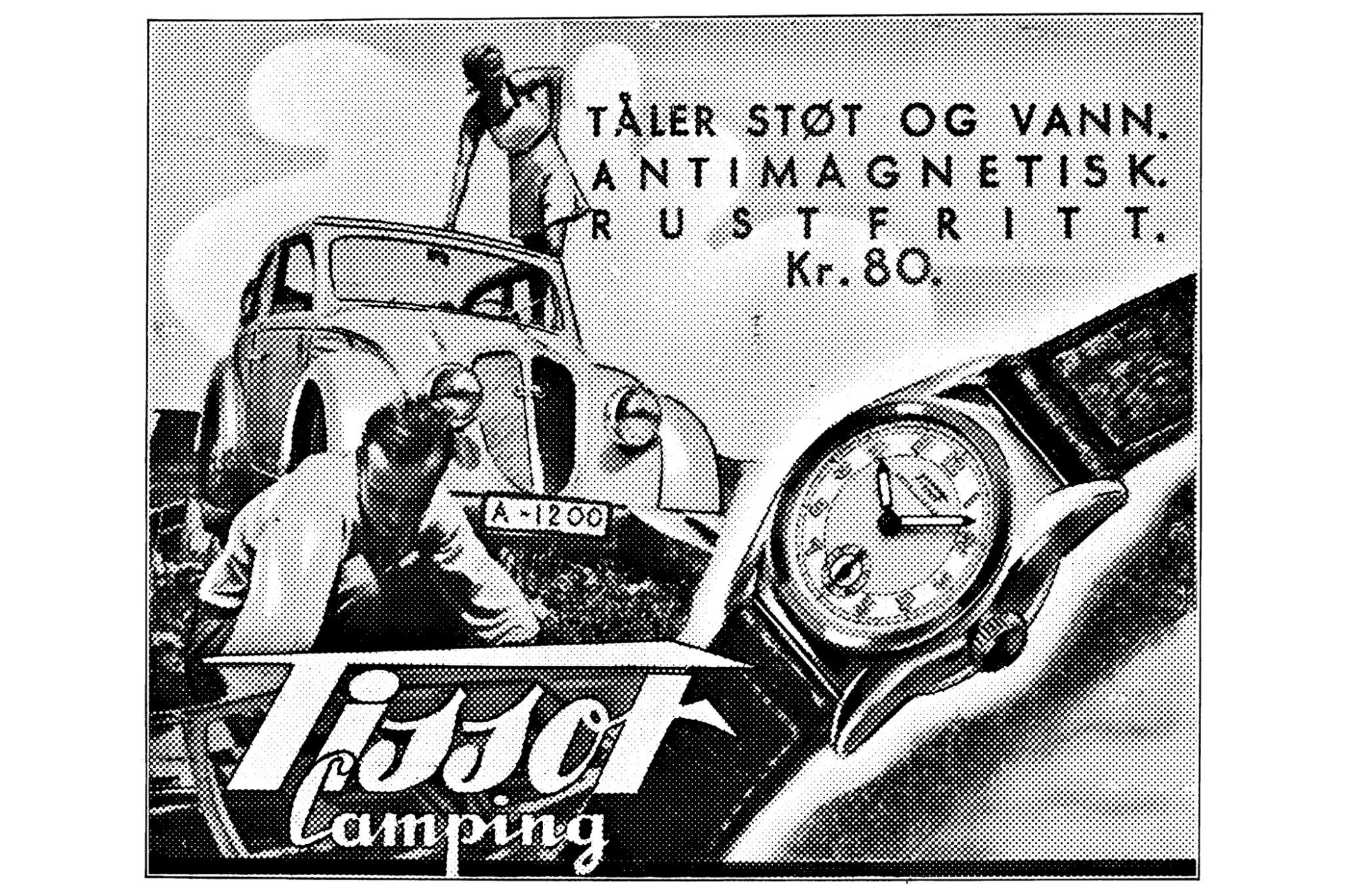
Advert for Tissot’s Camping model. Translation: Water-resistant, dust-resistant, anti-magnetic.
Thanks to a special screw system, Tissot’s 1938 Camping watch was water- and dust-resistant, as well as anti-magnetic. This latter feature marked Tissot out as a true pioneer. As electricity gained ground in the 1920s, suddenly affecting the accuracy of watches, Tissot invented the world’s first anti-magnetic wristwatch. In 1939, Tissot’s line of water-resistant watches expanded with the brand’s Aquasport. Adverts for the model read: “Water-resistant, precise, shock-resistant, anti-magnetic”.
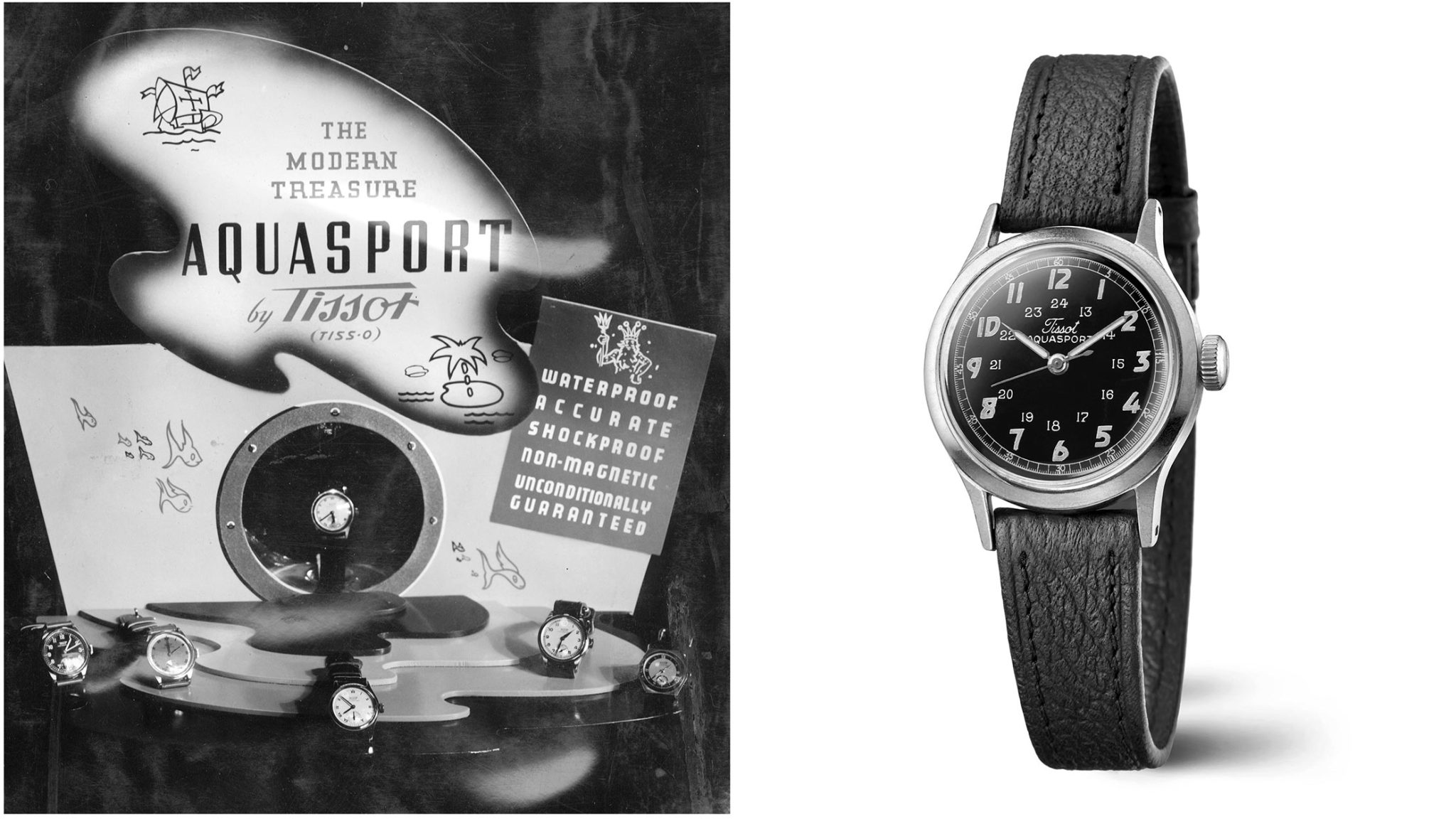
The birth of the Seastar
On the 13th of December, 1952, the name “Seastar” was registered at Tissot. While Rolex introduced its Submariner, water-resistant to 300 metres, and the likes of TUDOR and Blancpain burst onto the scene with distinctive watches and oversized diving bezels, Tissot watches remained simple and elegant. They slightly evoke the first OMEGA Seamaster models, which were also incredibly chic, to the point where you probably would have become hysterical if they came into contact with water (although this would be totally unwarranted, of course).
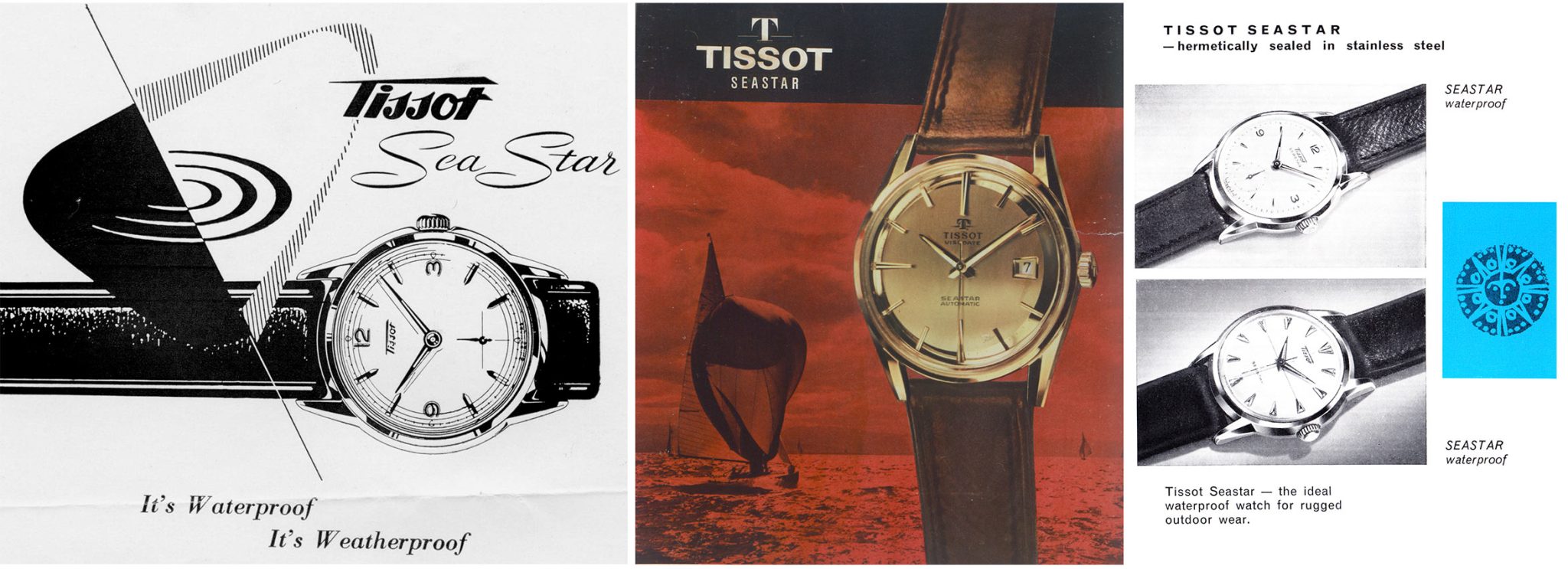
The Seastar collection first surfaced in Tissot’s 1954 catalogue (No. 17). The creation was airtight thanks to a double caseback, with additional protection against moisture and dust. Only in the 1970s, with Tissot’s T12, (twelve atmospheres) did a more sporty approach first become apparent. The perfectly round model featured an inner diving ring and was water-resistant to 120 metres. Tissot presented a sports model with a diving bezel for the first time in 1972, in the form of the Sideral S Reference 44 730.
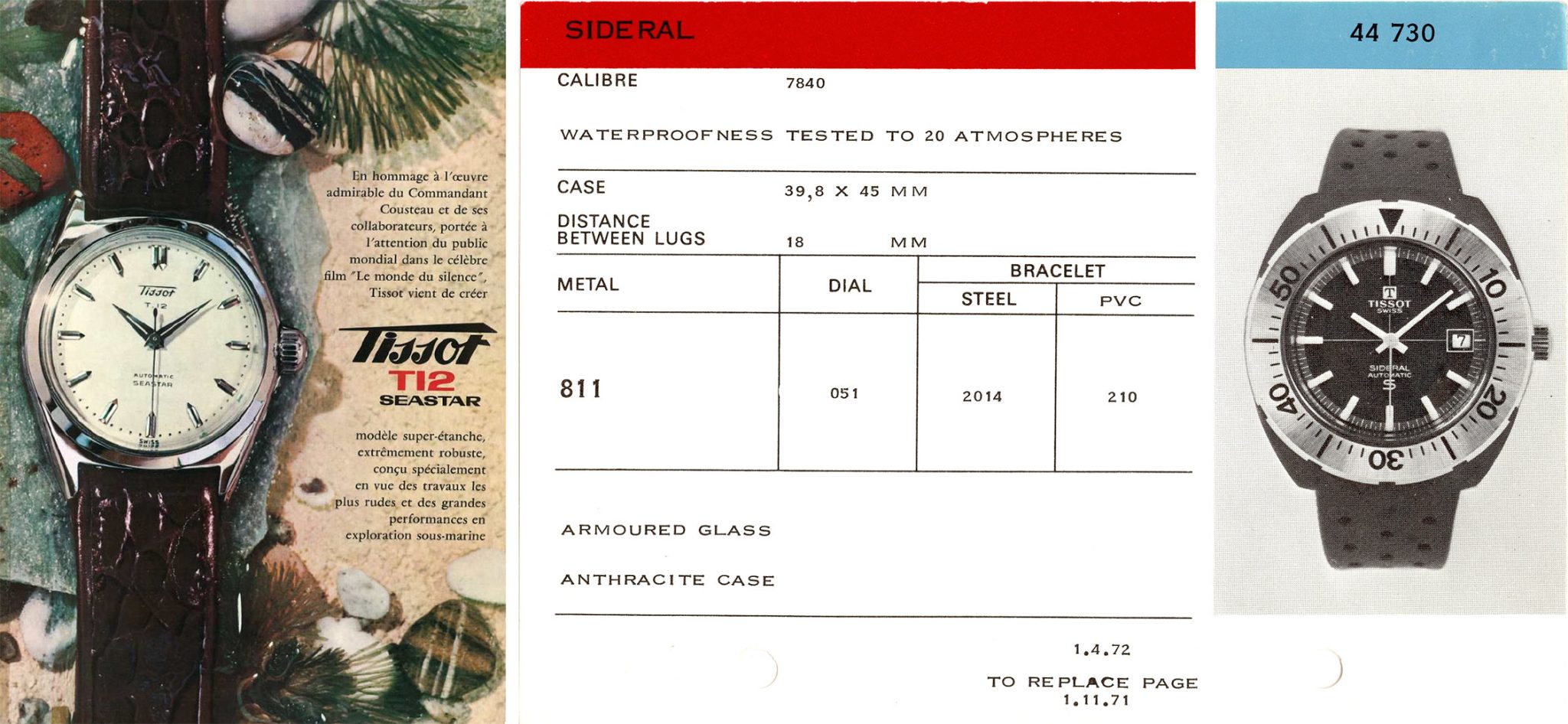
During the start of the 21st century, the Seastar underwent its fairly turbulent transformation into a tool watch. In 2003, the Seastar 660 appeared with a water-resistance of 200 metres and a recognisable rotatable bezel. In 2011, a relaunch of the line saw a new design with the introduction of the Diver Seastar models. The innovative horology house then took things further with an even higher level of impermeability for its Seastar models. In 2018, the Seastar 1000 Professional appeared, with water-resistance to 300 metres. It laid the foundations for the Seastar 2000 Professional, launched in spring of this year. The new piece is a professional tool watch, which no longer has anything in common with my 1960s Seastar.
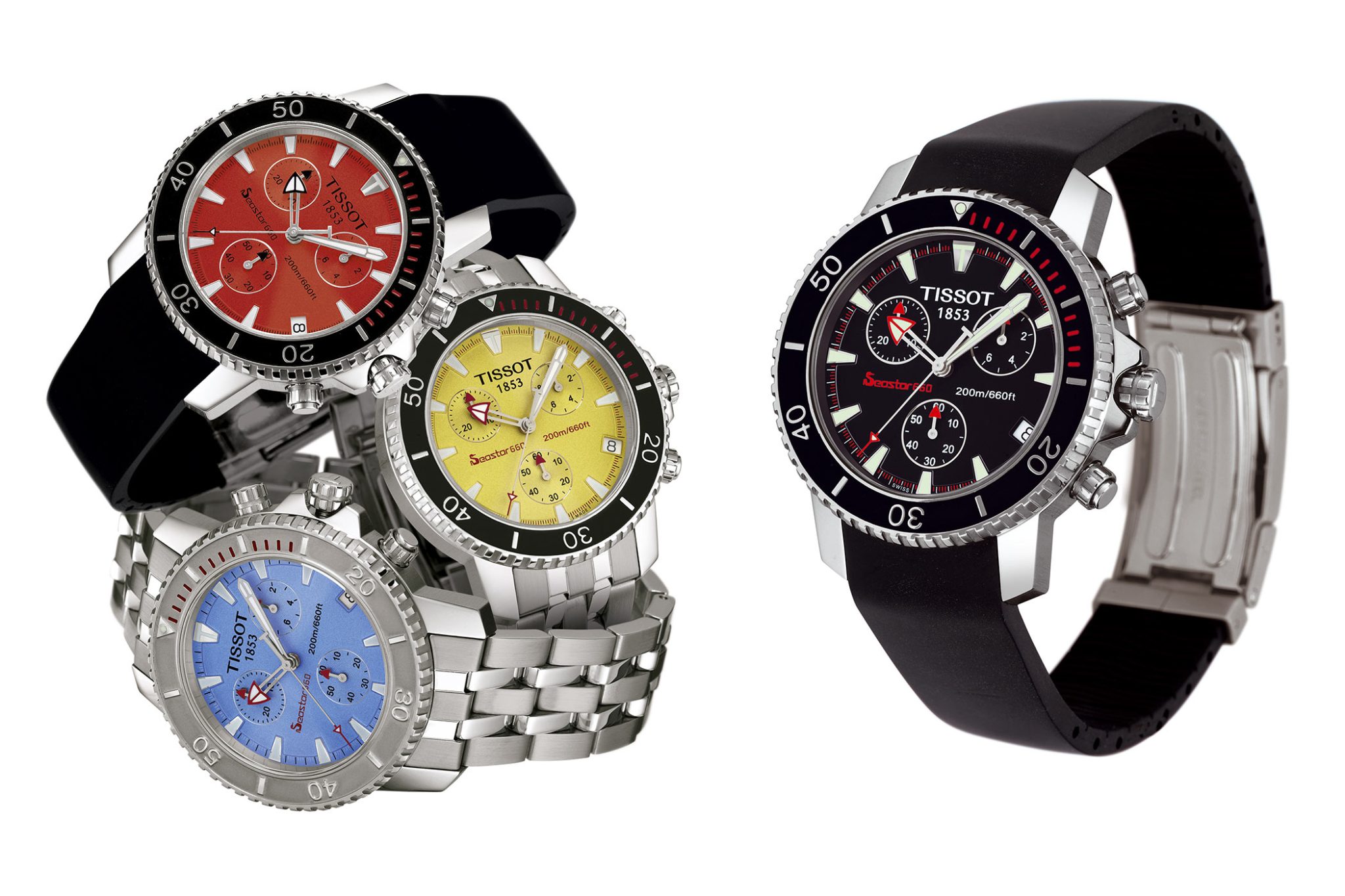
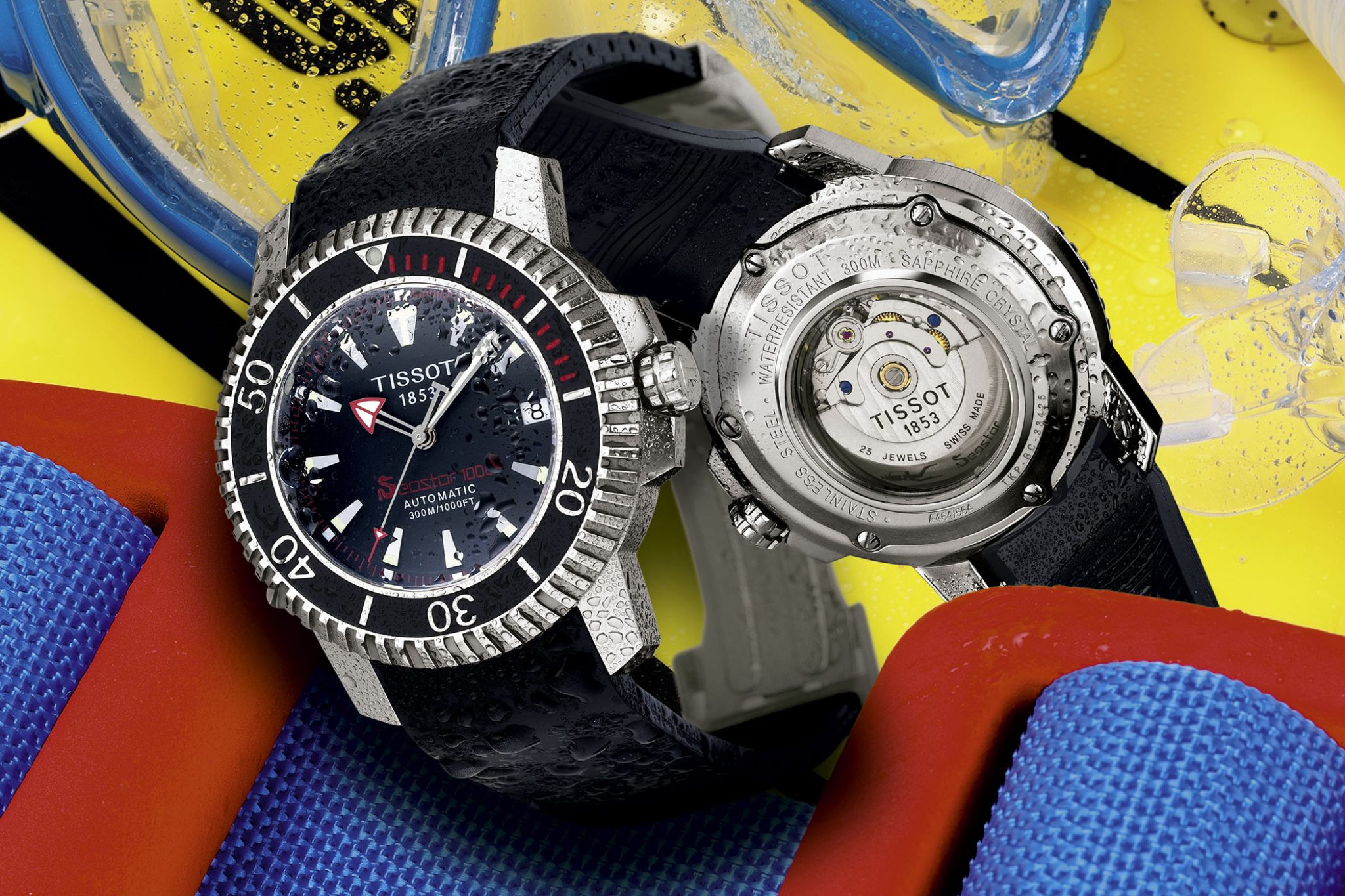

Tissot Seastar 2000 Professional
While its predecessors had a 43mm case diameter, the Seastar 2000 measures 46 mm, alongside a height of 16.25 mm. This new case needs to withstand water pressure at a depth of 600 metres. This is not just a vague promise; rather, it specifically complies with the international standard ISO 6425, by which the diver’s watch must meet strict requirements. Among other things, it must be able to withstand at least two hours at the maximum depth specified by the manufacture and not exceed a deviation of -4 and +6 seconds per day.
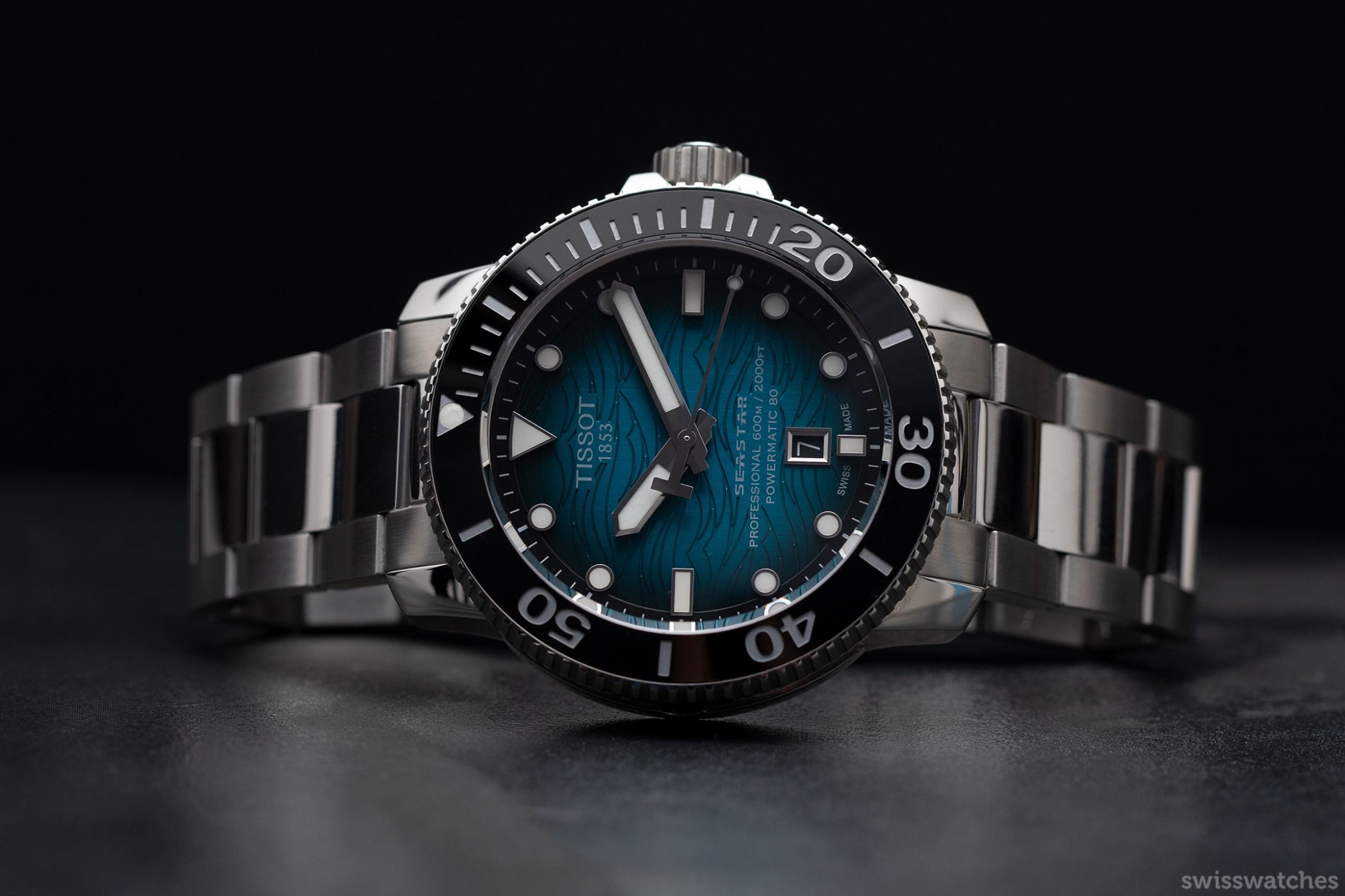
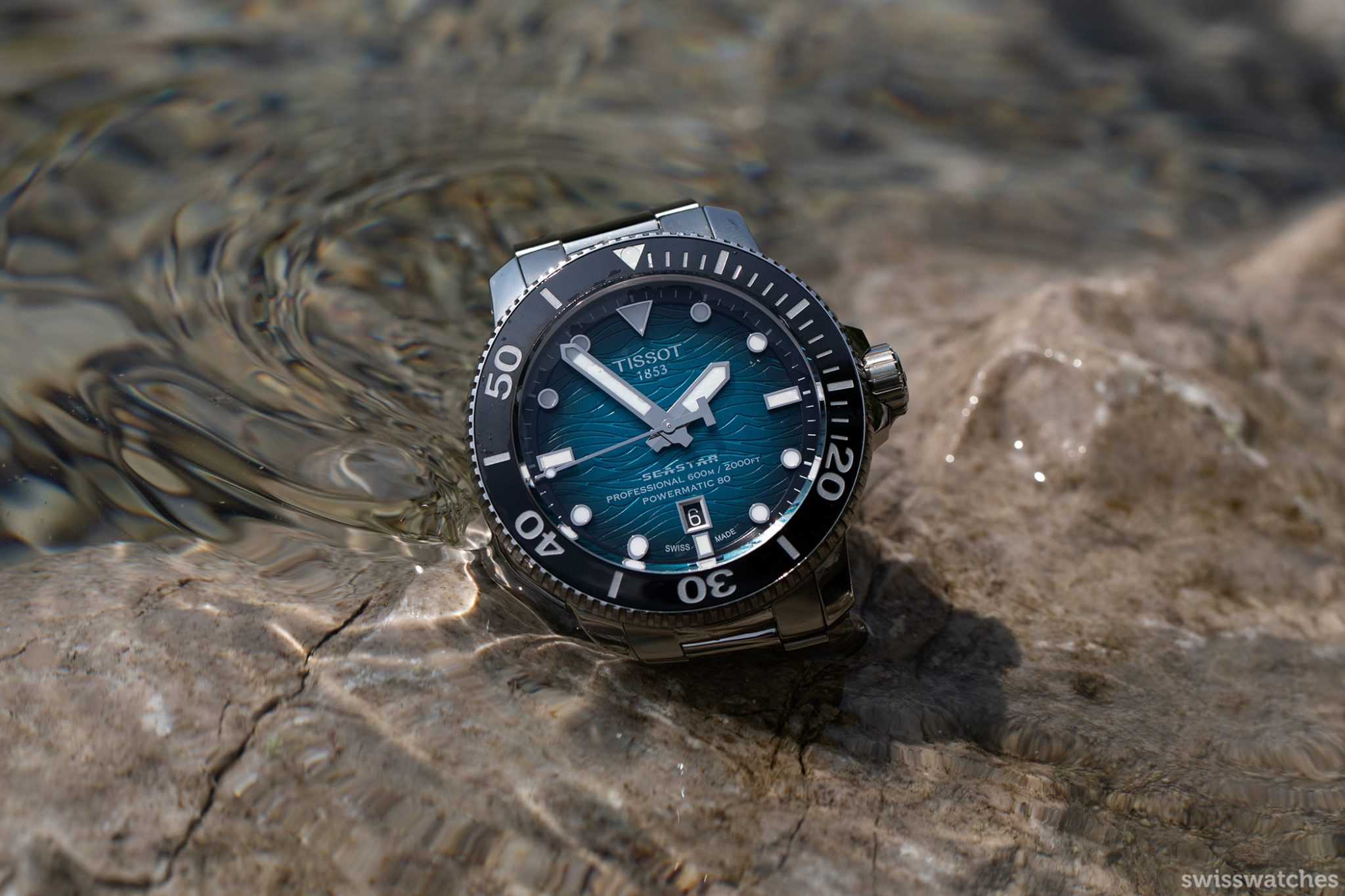
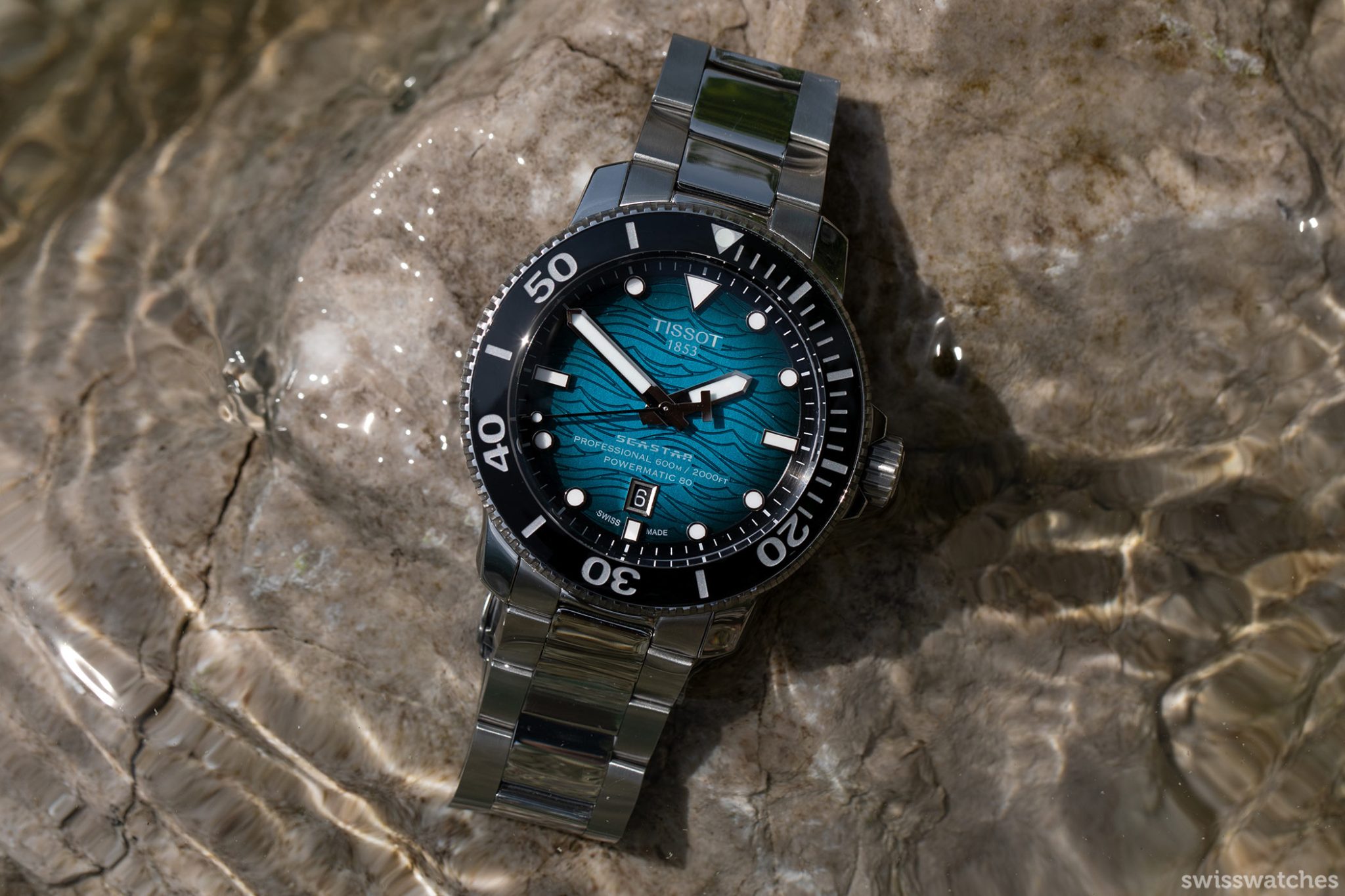
In this respect, the diameter and height are justified. However, I would argue that the watch is not really suitable for wrists smaller than 19 mm in diameter. Also, the case integrates a helium valve, lying at 9 o’clock. This becomes a necessary feature during a longer dive deeper than 100 meters. The valve allows excess pressure inside the case of the watch to escape. This prevents the sapphire crystal from potentially breaking.

The case is 316L stainless steel and, as befits a true diver, this protects it against corrosion. The bezel is also stainless steel, featuring distinctive fluting to make setting easier. The bezel’s insert, on the other hand, is black ceramic with a 60-minute graduation. The bezel is unidirectional and in the event of an accidental rotation, the dive time is merely shortened, never extended.
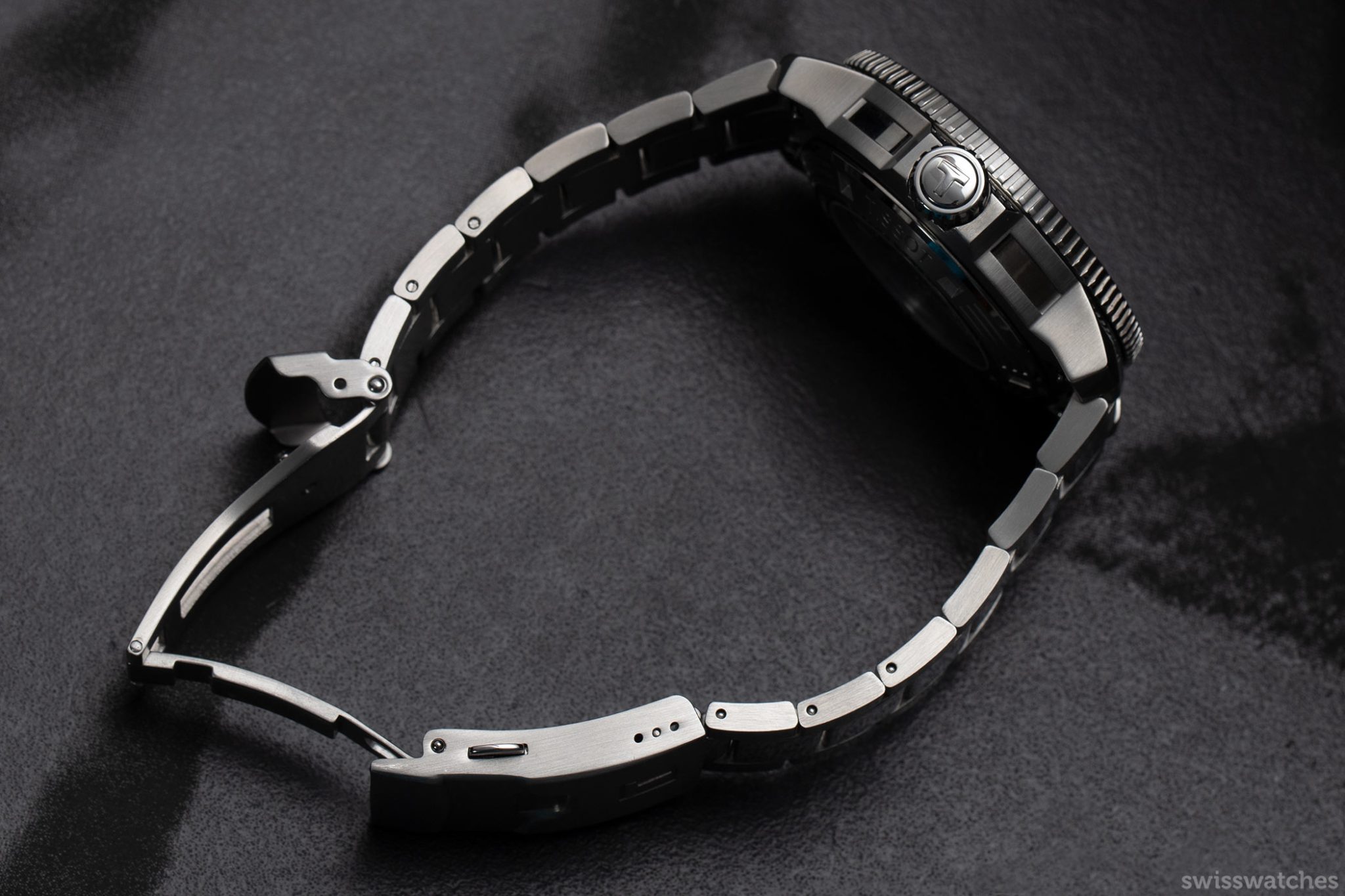
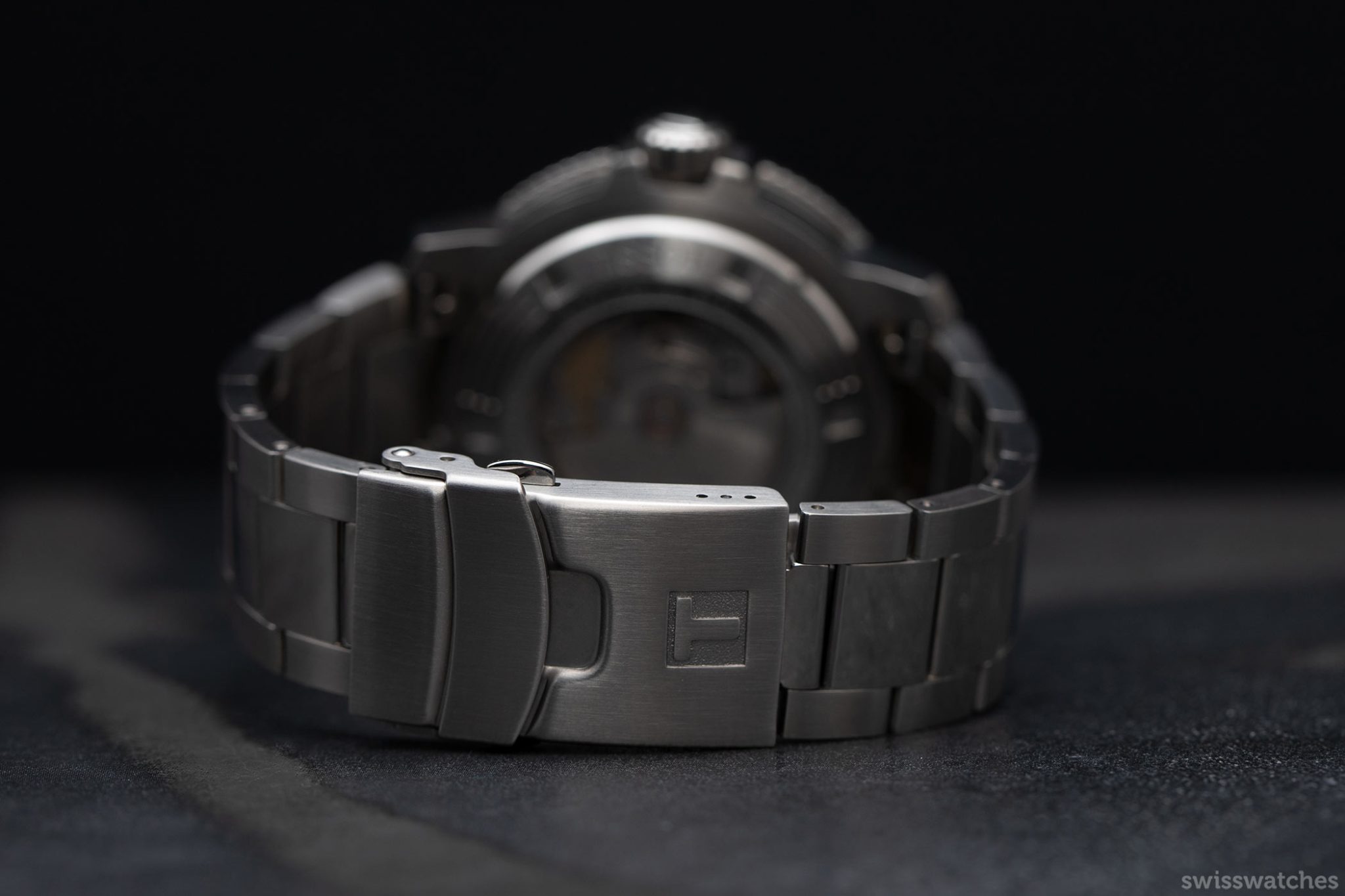
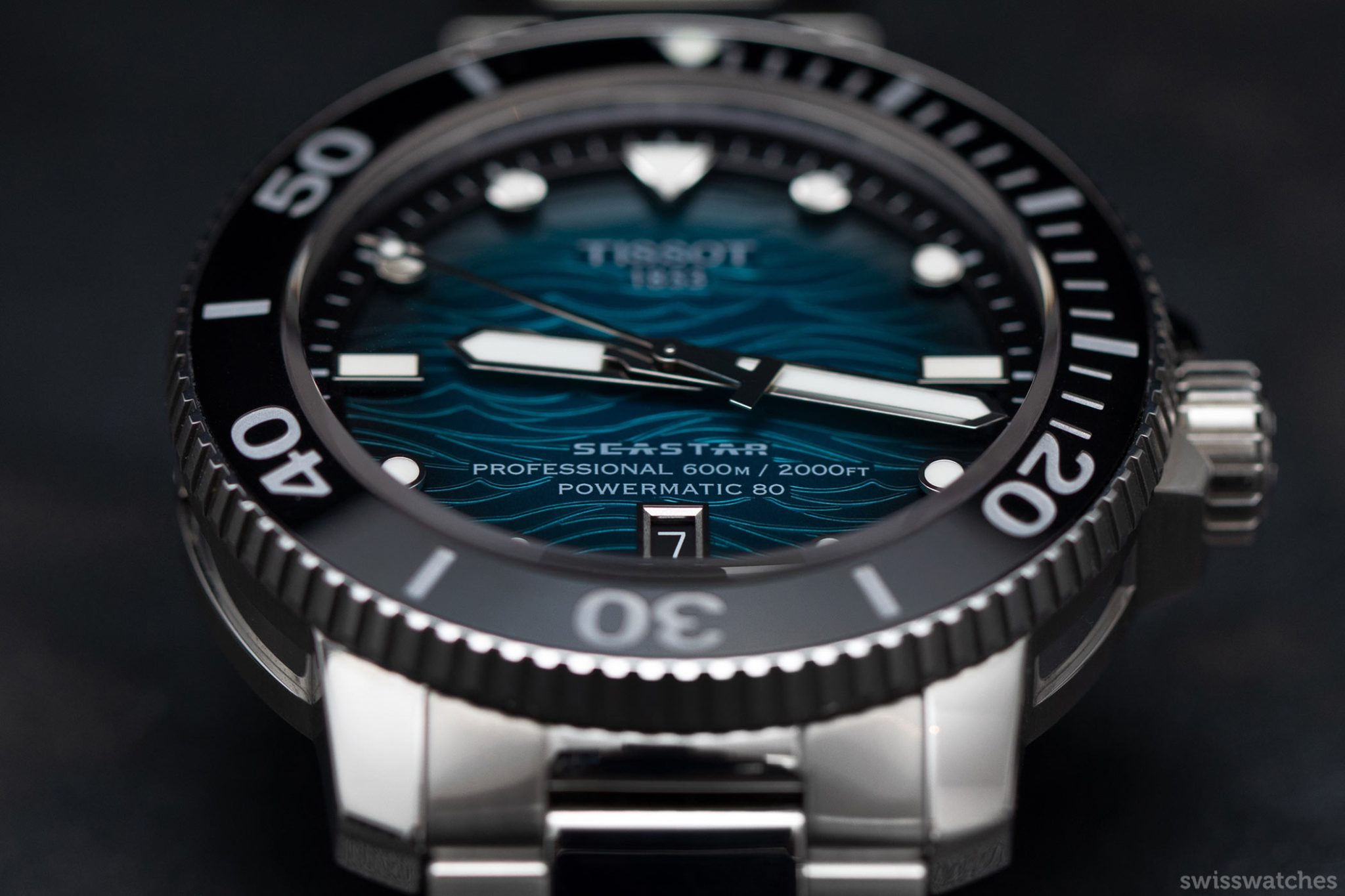
Equally as high quality as the case and bezel is the dial, which features a wave motif. It alternates between deep dark blue and light turquoise blue. Tissot offers the Seastar 2000 Professional with three varying dial options: anthracite, blue and turquoise; each of which flaunts the characteristic wave motif.
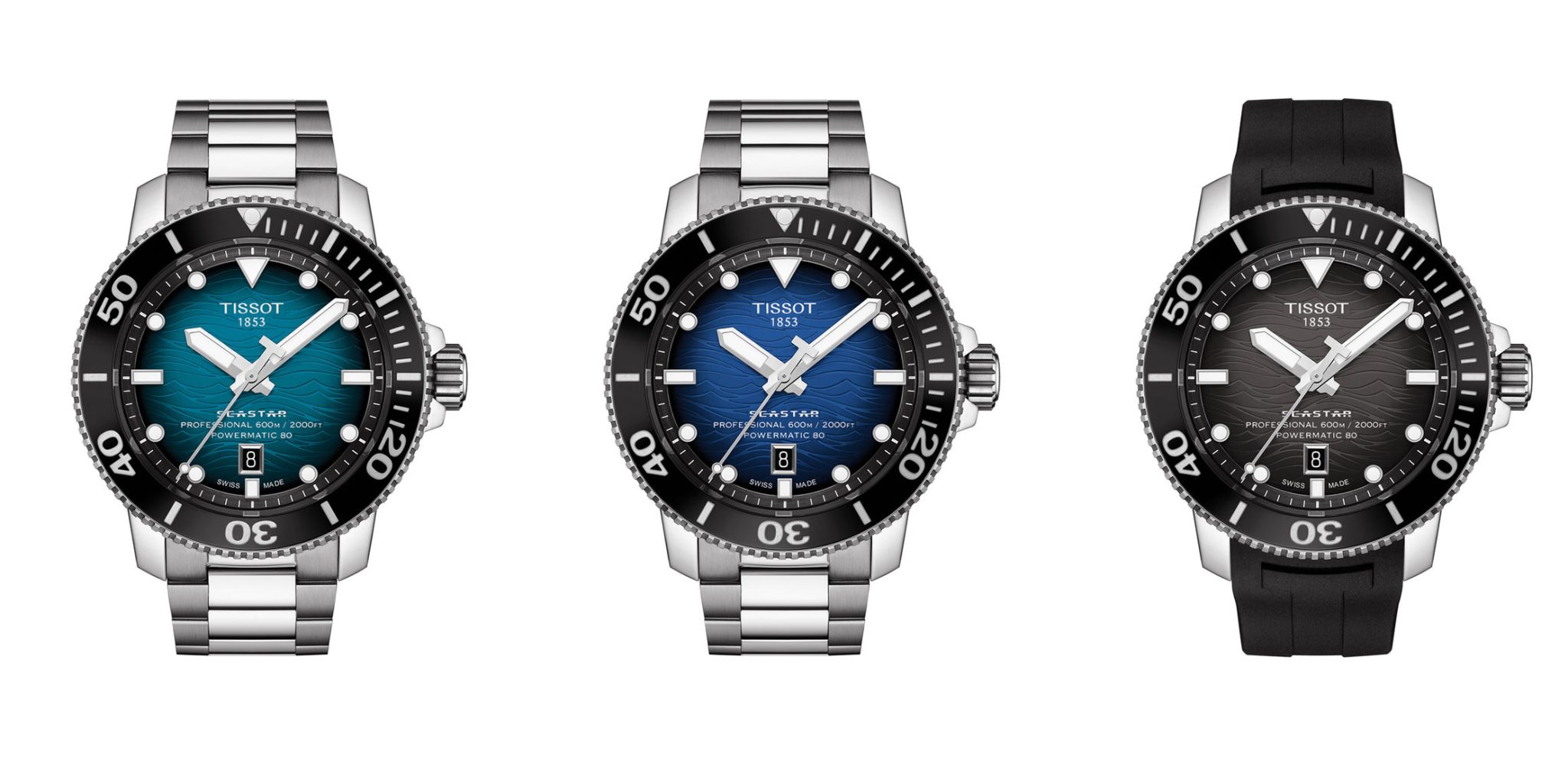
The Powermatic 80 movement
The Powermatic 80 calibre is a real power machine. As its name suggests, it runs for more than 80 hours without additional energy supply. Some watch manufactures have a hard time keeping up with that. So, if you like to change your watches frequently, you won’t have too much work with the Seastar 2000.
Tissot first introduced the movement in 2013, into its “Luxury” collection, making it the first Swatch Group brand to use it in its watches. Steadily evolving ever since then, it is based on the reliable ETA 2824 automatic calibre, which has been around for a couple of decades. One difference from the ETA movement is the lower balance frequency of 21,600 vph, rather than 28,800 vph. However, this has an impact on the seconds hand, which no longer moves across the dial quite as smoothly, as the hand makes only six steps per second, rather than eight.
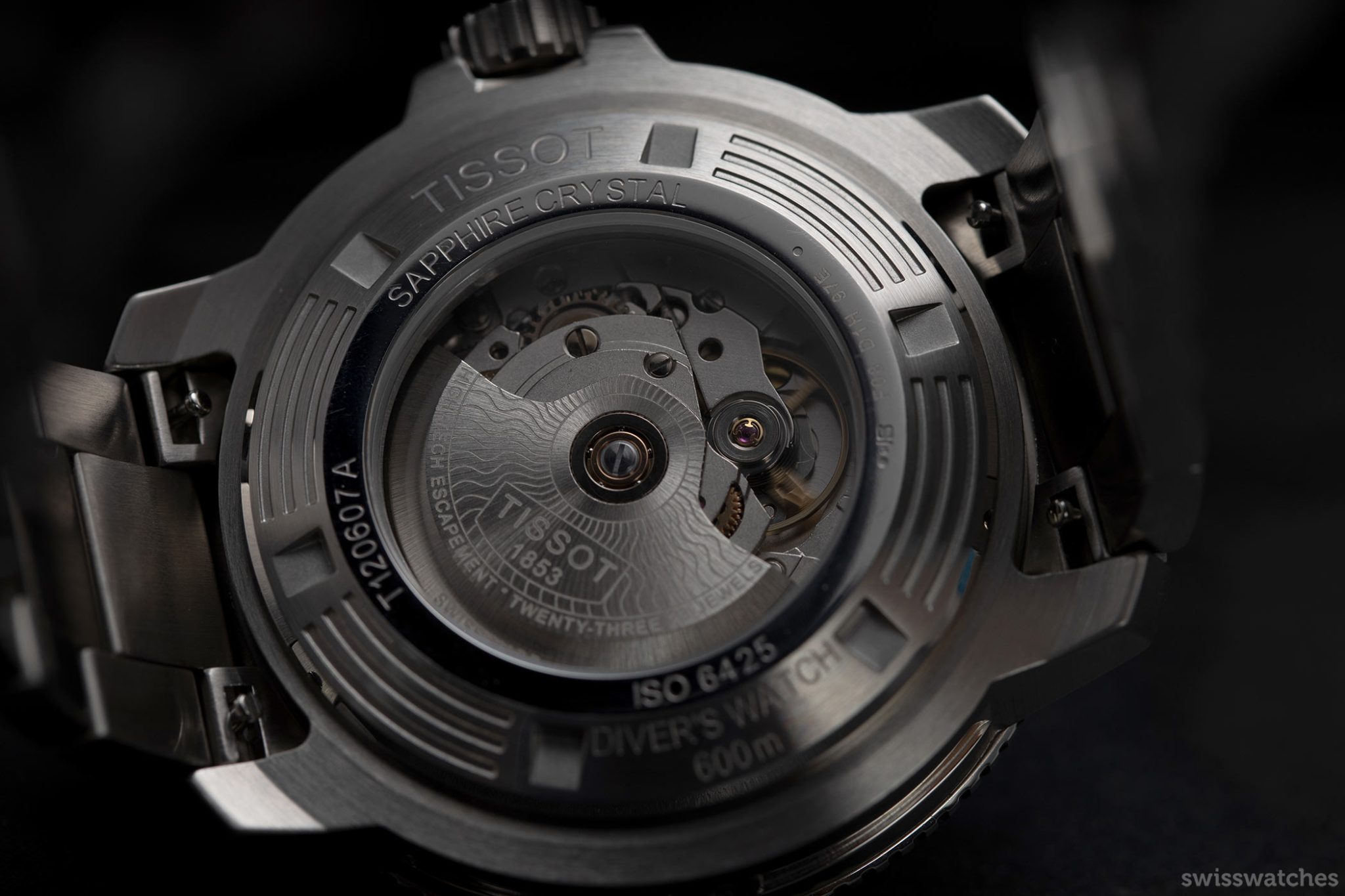
In addition, the Swatch Group now uses a Nivachron hairspring – essentially a technical upgrade to the classic silicon hairspring. This is made of a titanium-based alloy and is completely anti-magnetic, thus having a positive effect on the oscillation. The calibre is exclusively available for Swatch Group watches, whereas the ETA 2824 is open for use at other manufactures.
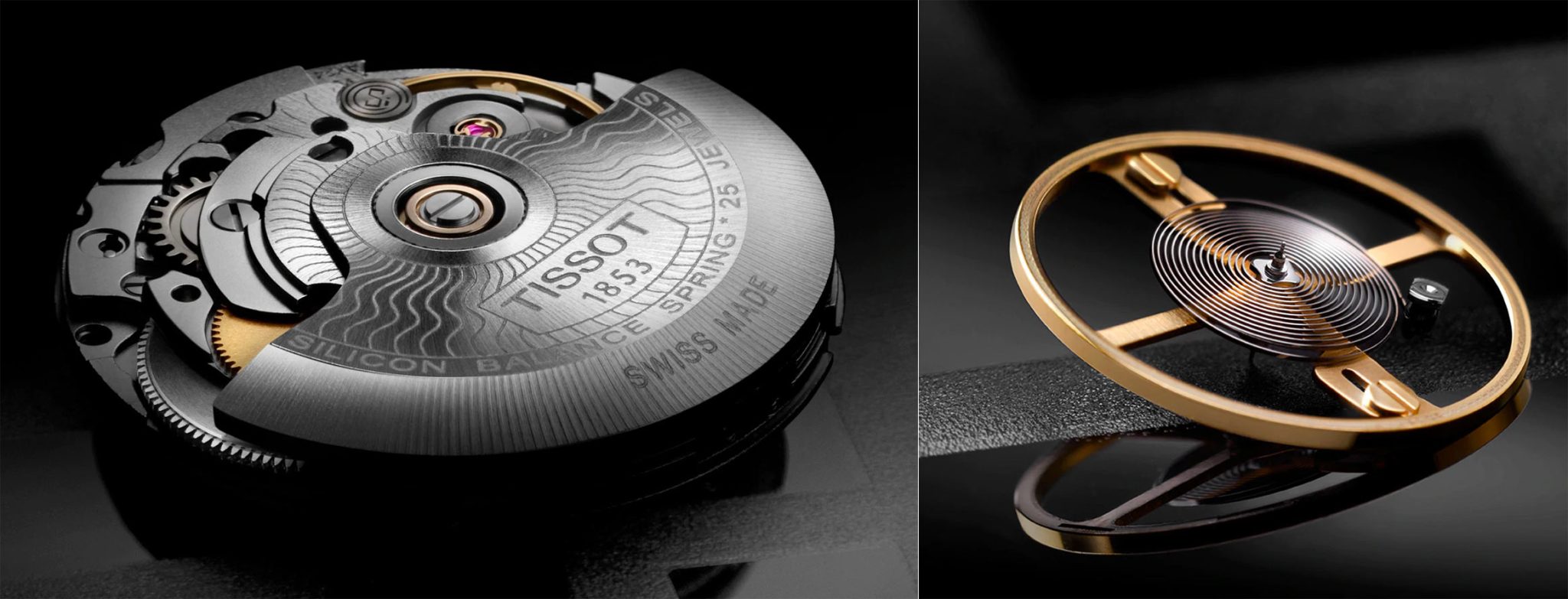
Seastar 2000 Professional: The Verdict
It’s almost impossible to comprehend that Tissot can offer so much quality for 1,030 euros. The craftsmanship behind the dial, bezel and case is all of extremely high quality. The flat surfaces are polished and the vertical surfaces are satin-finished. Meanwhile, the dial is a real chameleon, constantly changing its hue depending on the light, and showcasing beautifully finishing.
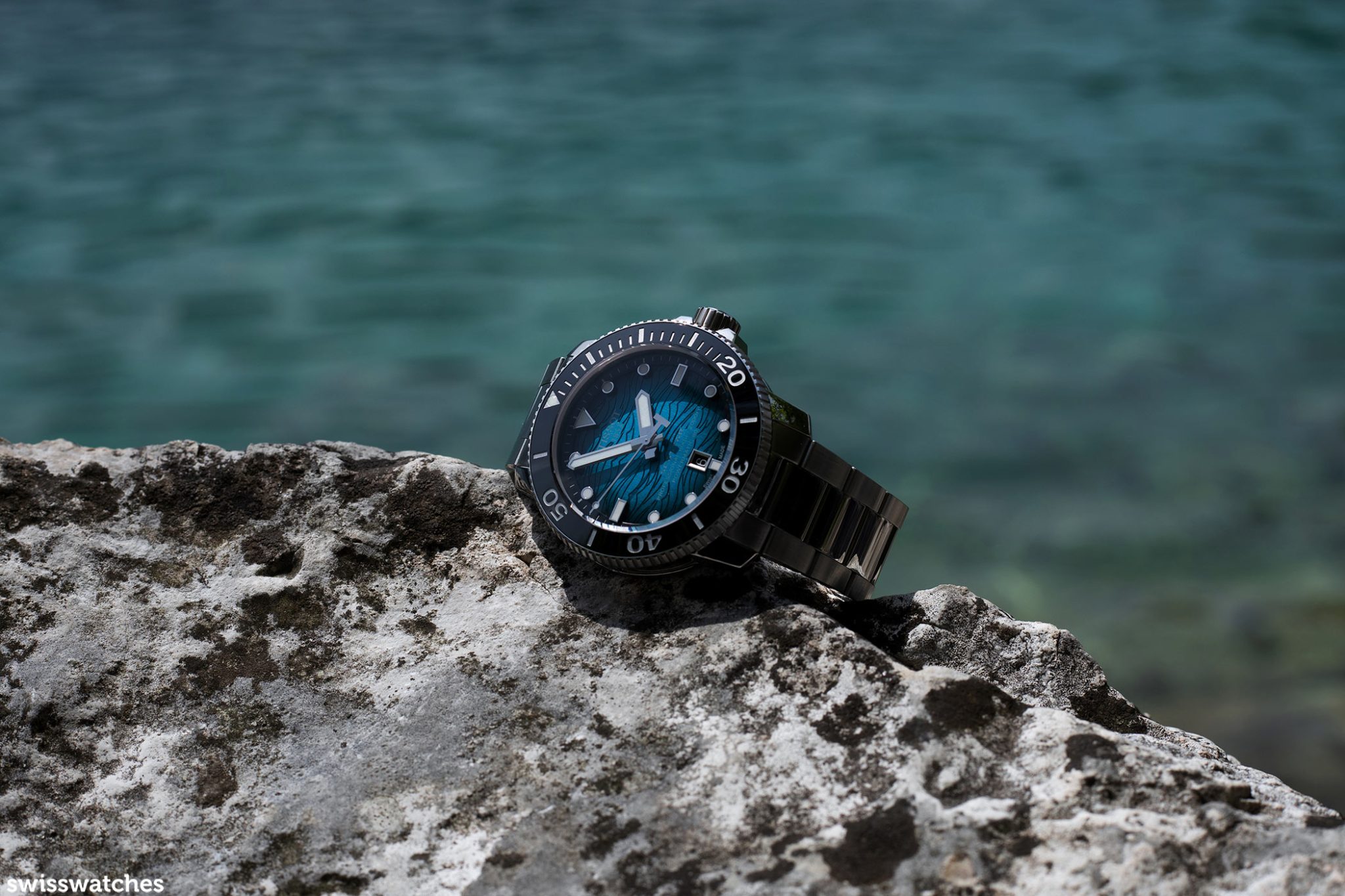
Even the date at 6 o’clock lies in a small metal window and is subtly highlighted in black. Since the Seastar 2000 is a professional tool watch, some will wonder about the purpose of the date. However, this is quite deliberately also a watch for everyday use, meaning the date display has a clear advantage. The click of the unidirectional rotating bezel sounds nice and clean – it’s just a little too easy to adjust, in our opinion, and could do with slightly more resistance.
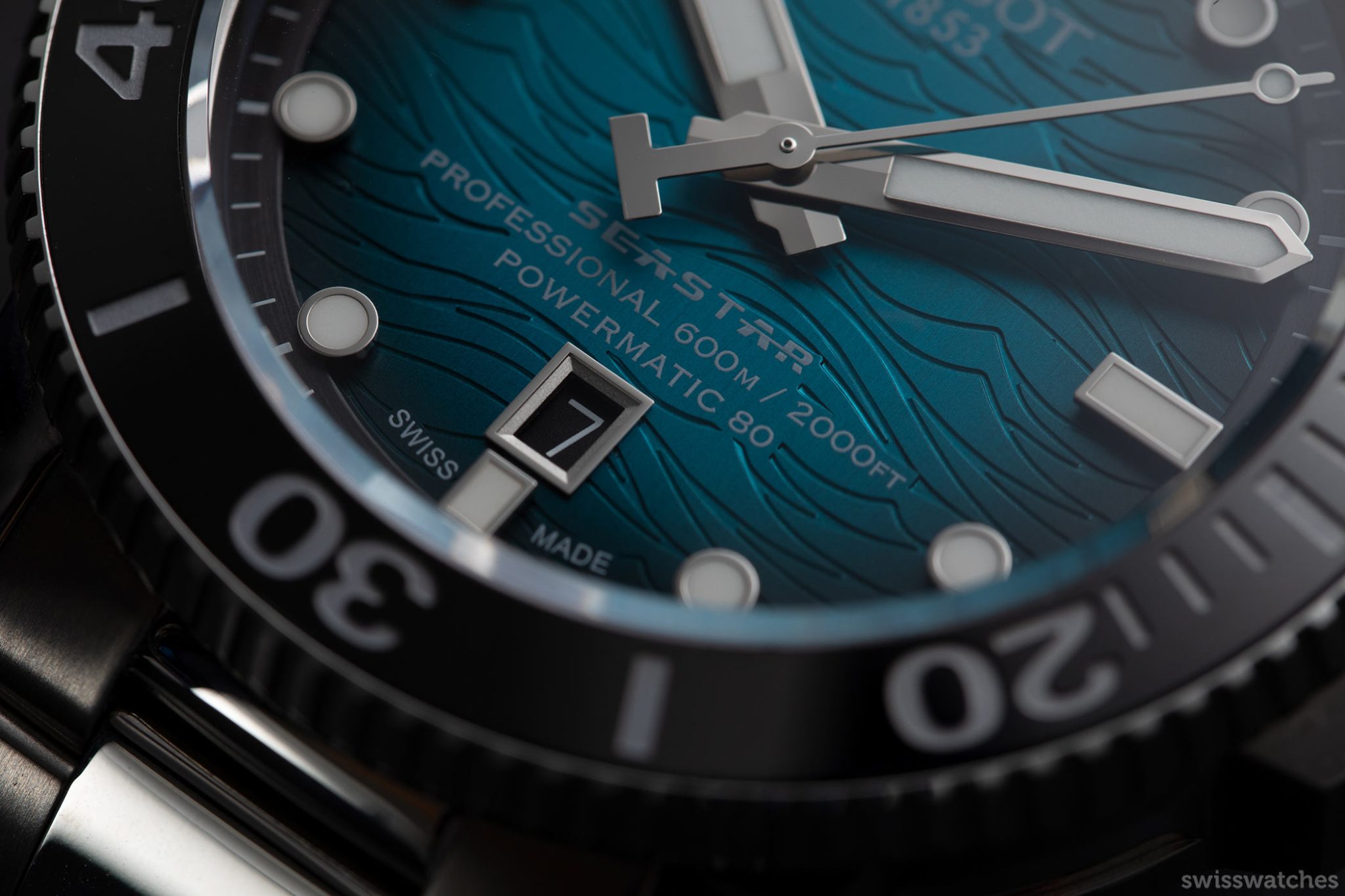
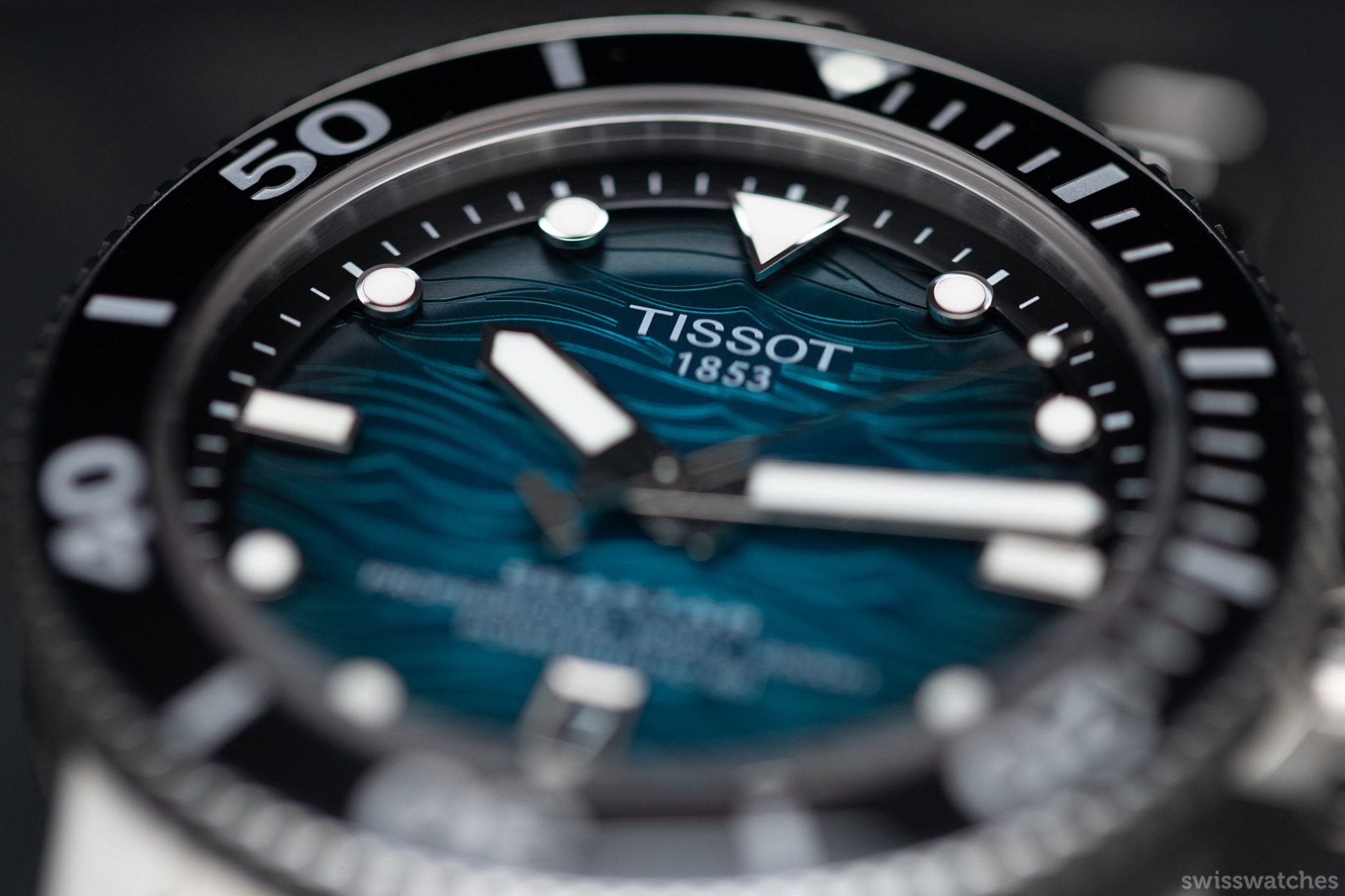
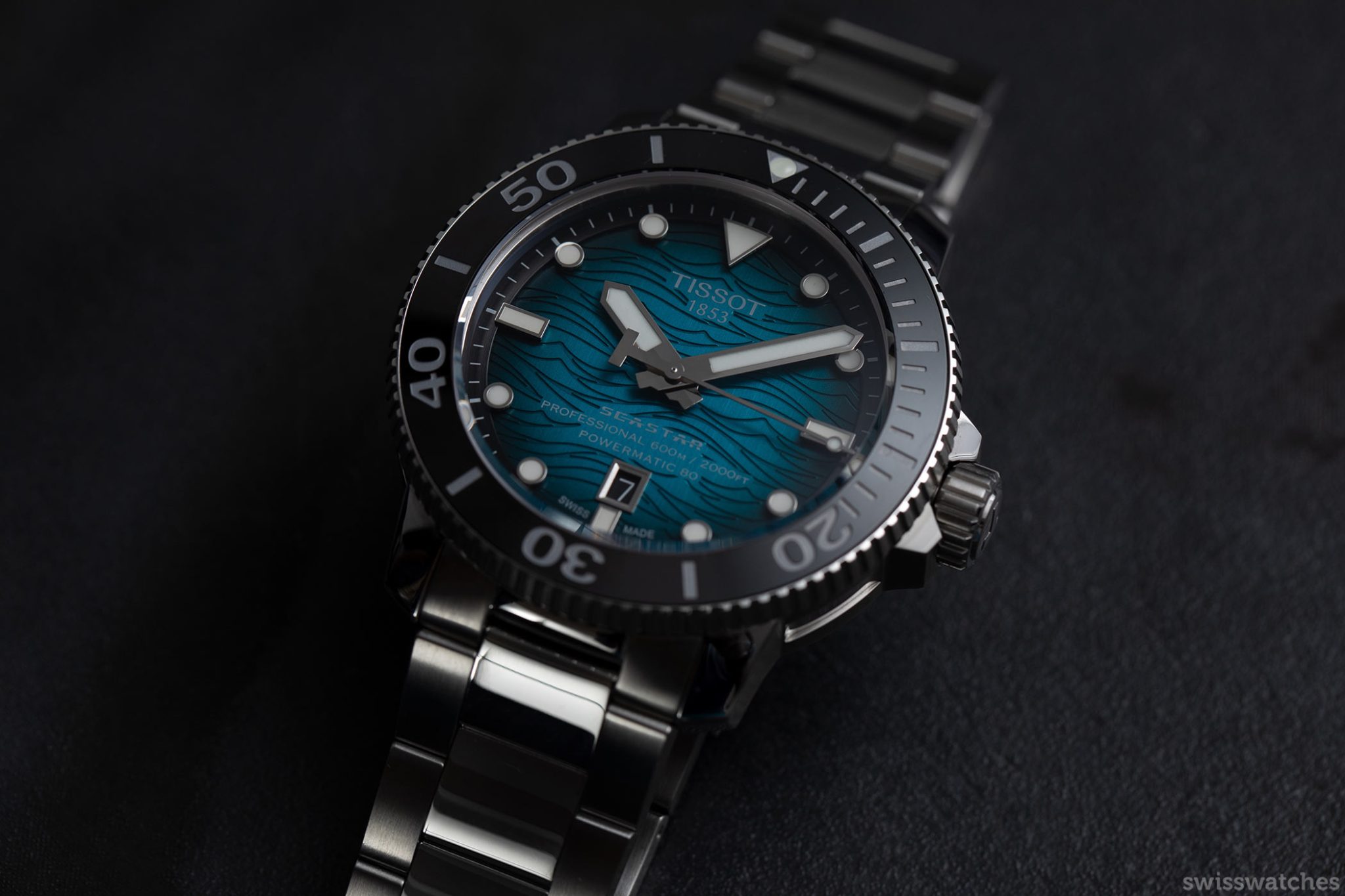
On top of that, the latest generation Powermatic 80 calibre is a sparklingly clean movement with a long power reserve. Credit goes to the designers’ wise choice to expose the movement, complete with engraved oscillating weight, through the sapphire crystal caseback. It almost has the appearance of a small porthole of a deep-sea diving boat, and nicely mirrors the dimensions of the robust case.
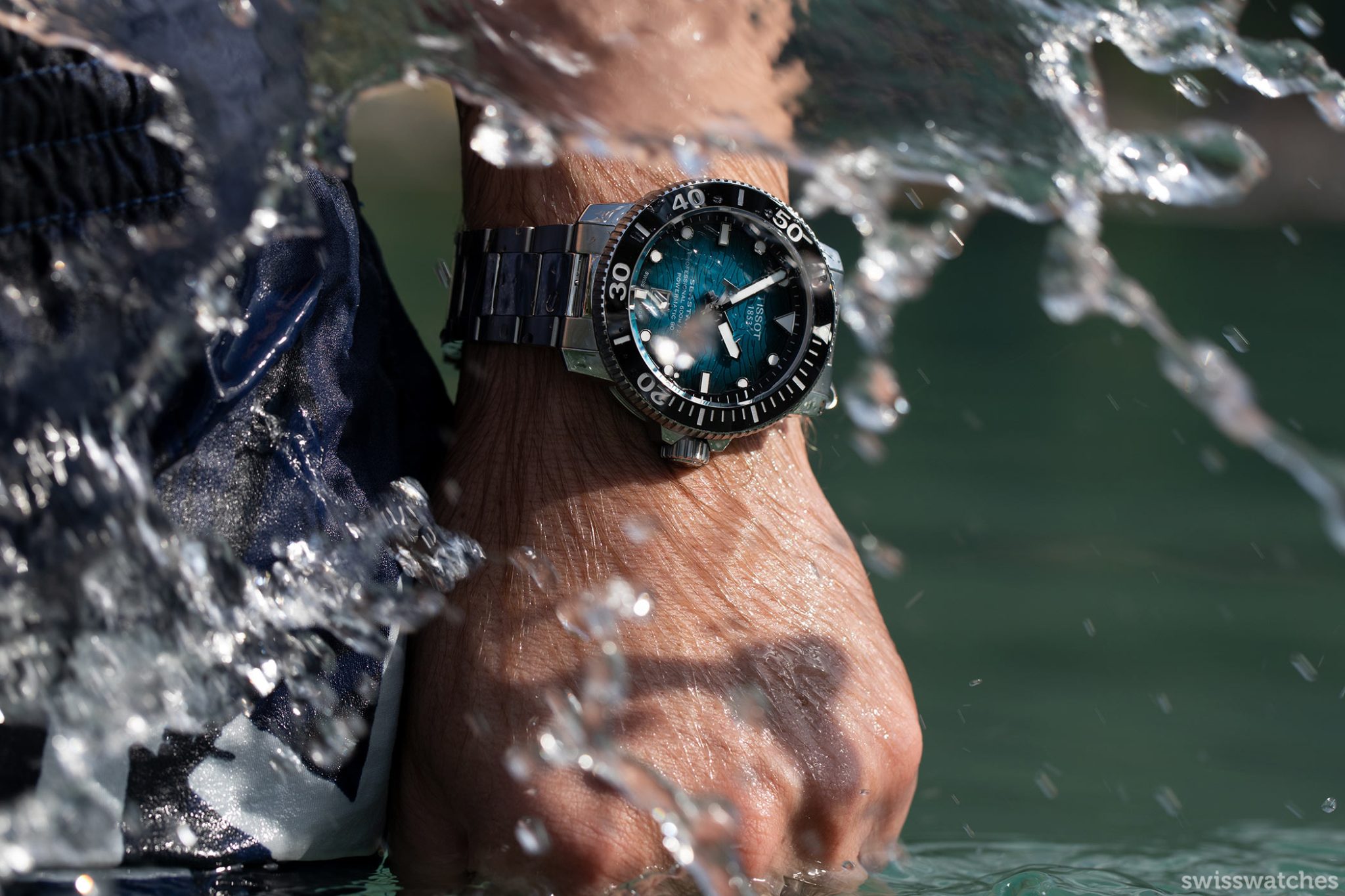
The Price
Tissot’s Seastar 2000 is real competition for Oris’ Aquis Date, which is currently all the rage amongst diver’s watch enthusiasts. While Oris offers a power reserve of 120 hours with its new manufacture calibre, it also costs almost three times as much and is ‘only’ water resistant to 300 meters – not that it will necessarily be the deciding factor when it comes to purchasing. In any case, given the price segment and technical features, the Seastar 2000 is almost unrivalled. Other professional tool watches like the Oris Aquis Pro Date (1000 meters of water resistance), the Aquaracer Professional 300 from TAG Heuer, or Breitling’s Superocean Automatic 44 are in a different price league altogether.
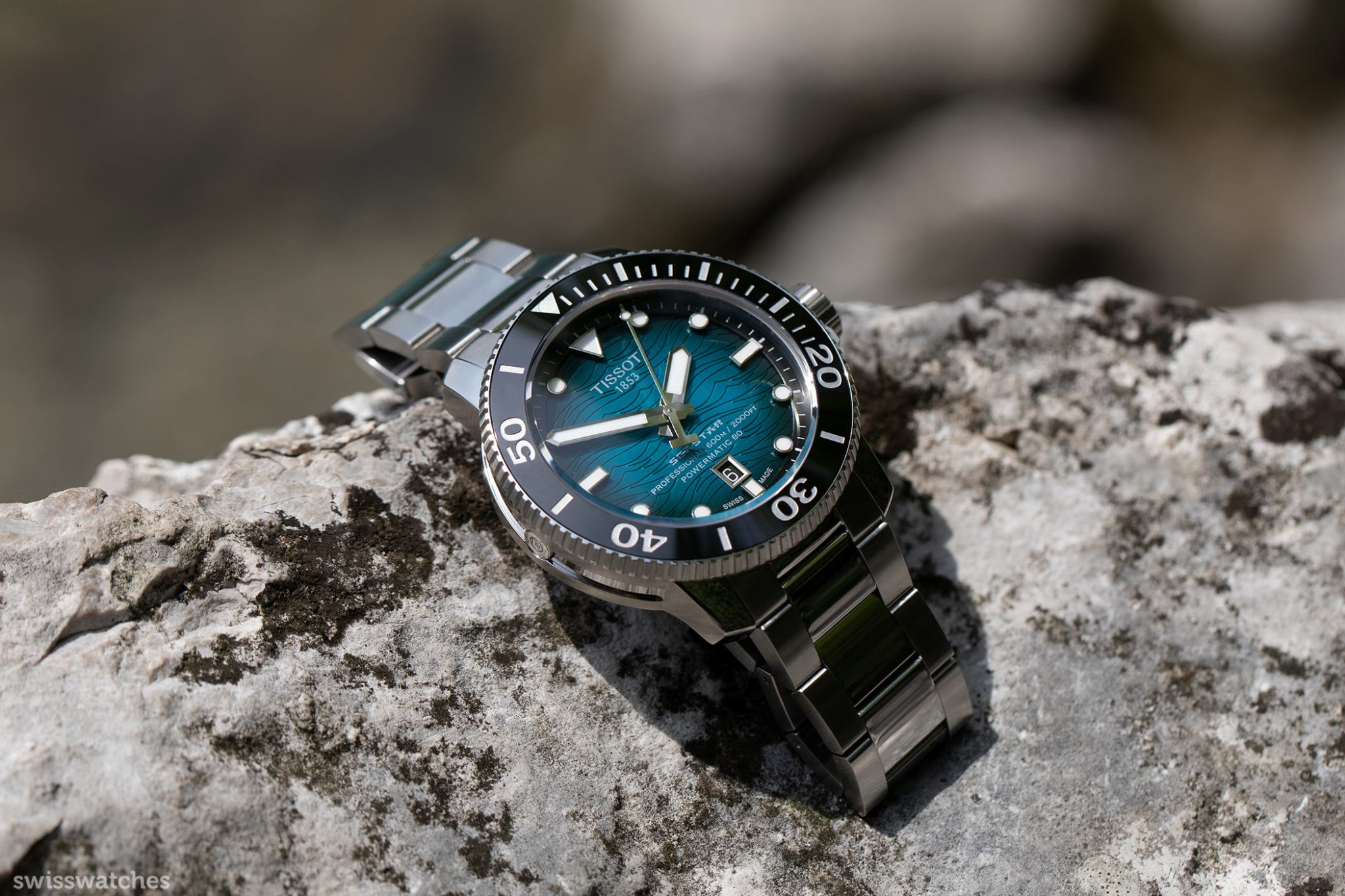
A compellingly good diver’s watch
The watch is large – and it’s also notably heavy. But the steel case has to be able to withstand pressure at a depth of 600 meters. It comes with either a rubber strap or a stainless-steel bracelet with a safety folding clasp, which can be easily replaced by the wearer thanks to the quick-change system. Since the wrist also behaves differently at different temperatures, it is always helpful when the strap can be easily fine-tuned. On the Seastar 2000, the strap can be adjusted in three small steps with the help of a small tool.
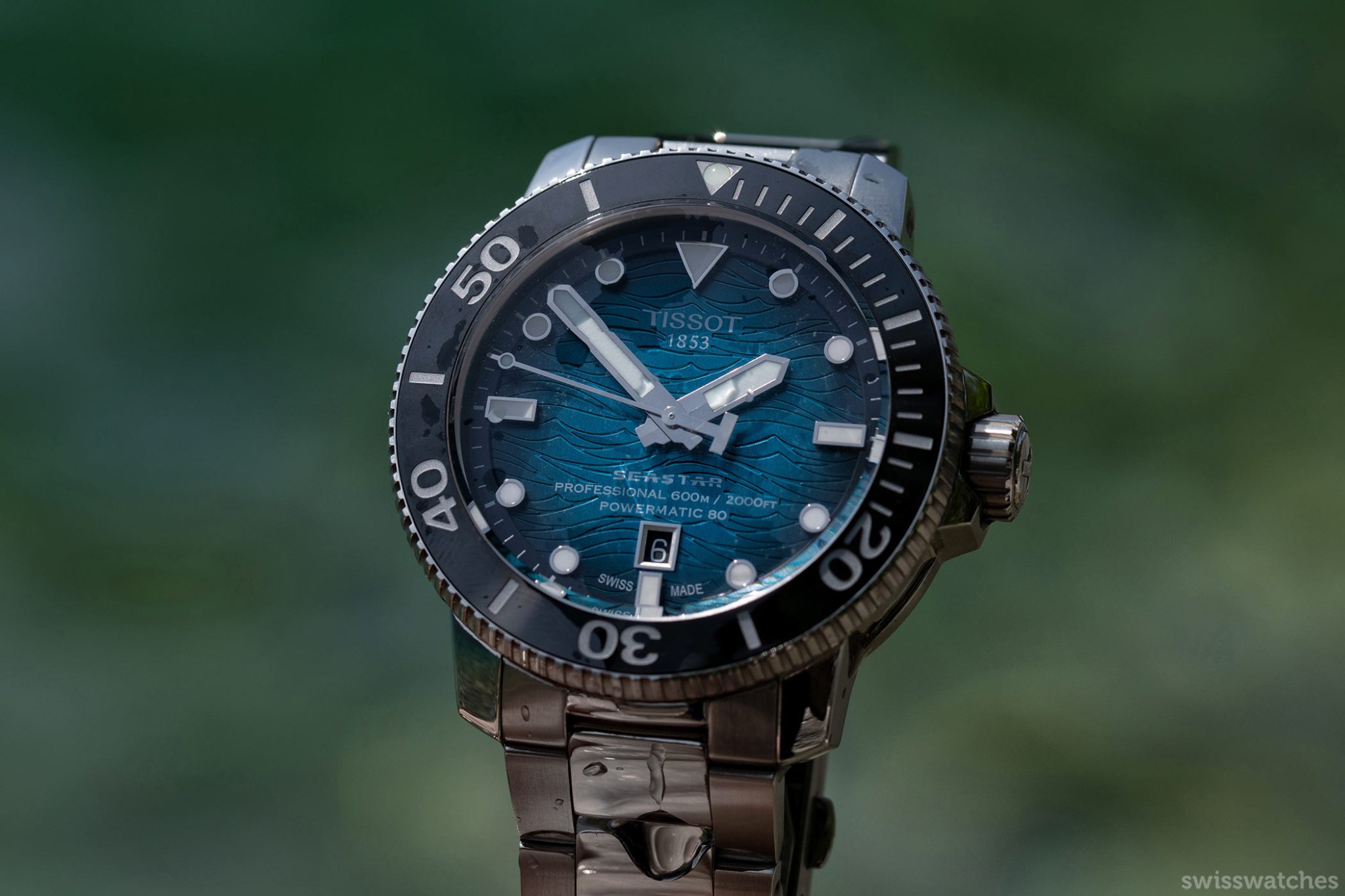
The bottom line is this: with the Seastar 2000 Professional, you get a super sporty and everyday tool watch with a pretty decent movement, all for an irresistibly good price. It looks like my vintage Seastar may soon have to get used to having a younger mechanical brother.
FEATURES
T120.607.11.041.01 (turquoise)
T120.607.17.441.00 (anthracite)
Height: 16.25 mm
Rubber strap
